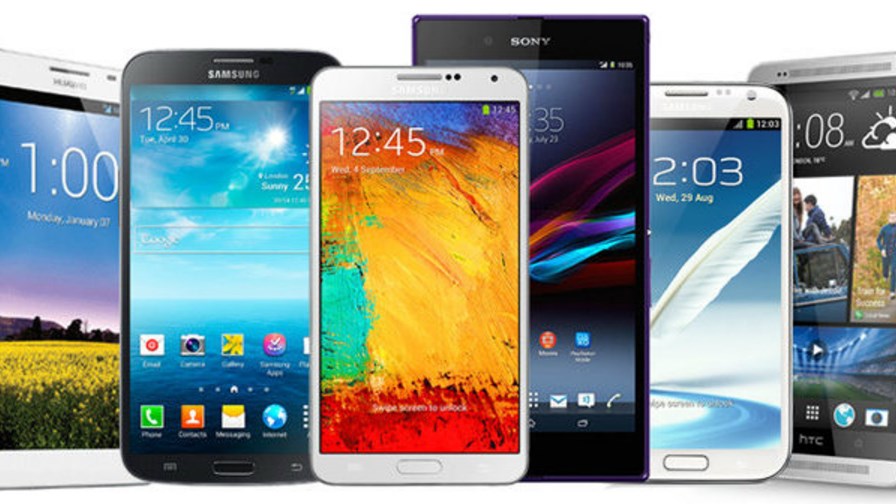
via Flickr © melenita2012 (CC BY 2.0)
After a derisive start, Phablets - half phone half tablet, being a smartphone with a screen larger than 5.5 inches but retaining the smartphone shape and orientation – have been outperforming the mobile device market since the launch of the Galaxy Note in 2012, according to market research outfit GfK.
It says the last quarter of 2014 saw the phablets’ best sales performance to date, capturing 12.8 percent of total global mobile device sales.
It’s come a long way since 2010 when the GSMA’s Dan Warren and I admitted to each other in the privacy of the TelecomTV meeting room, a secret longing for, you know… the ‘larger’ smartphone.
Dan confides now that life wasn’t easy once his secret was out and he introduced his new friend - a Dell Streak - into an office dominated by piddly little iPhones. “I got a right ribbing,” he told me. “People would spot it on my desk and make jokes.”
Once he’d come out as a larger format user, though, his proclivities gradually became more acceptable. When he formed his next ‘big phone’ relationship with Samsung’s Note, he noticed that senior colleagues at the GSMA had started to come on-board with Notes of their own. That made things much easier - even acceptable. Big became cool.
“People back then made a big thing about phones being too big to be used one-handed, but what you get instead is a good-sized qwerty keyboard, displayable on the screen of a larger device which you can hold on its side, two handed, and hit the keys with both thumbs.”
Amen. Clearly if Darwin didn’t intend for us to type at reasonable speed on a touchscreen he wouldn’t have had us evolve opposable thumbs.
“And the format has other advantages,” continued Dan. “There’s just more room for stuff inside, like bigger batteries.”
Having blazed a trail with the Note, Dan has remained a serial big screen monogamist, working his way through Notes 2, 3 and 4.
As for myself, I was a little less bold. I seriously considered the Streak but it felt somewhat clunky and plasticy, like something manufactured in Russia in the Soviet era. I eventually opted instead for the HTC Desire HD, which that time was a ‘big’ phone and sat, in my local Carphone Warehouse, on its own little plinth ostentatiously tethered with a security cable: serious desirability.
Today it wouldn’t even squeeze into anyone’s phablet definition with a ‘mere’ 4.3 inch screen (I notice the latest version of the Desire sports a 5.5 inch screen, just making it) and neither would the - monstrous at the time - Streak at just 5 inches.
It’s all relative.
Now the rest of the world seems to be catching on and according to GfK, falling prices and consumers’ insatiable desire for multimedia content mean that the phablet phenomenon will continue into 2015 and beyond.
Its numbers (above) show that phablet ownership is growing in all regions. Asia Pacific has led the adoption of the phablet and in Q4 2014 they represented 17.5 percent of all mobile devices sold in the region, up from 8.5 percent 12 months earlier. Share was lowest in Latin America at 1.9 percent, up from 0.4 percent in Q4 2013.
The market share of phablets grows at the expense of that of standard sized smartphones. Globally their sales unit shares fell 13 percentage points from 100 percent in Q4 2011 to 87.2 percent in Q4 2014.
According to Arndt Polifke, Global Director of Telecoms at GfK: “The phablet’s not-so-secret weapon is its screen size, perfect for consuming the media content people have become addicted to. Phablets are all-rounders, fulfilling the combined roles of a smartphone and tablet – but for a lower price than just one of these devices. This means emerging markets will have a crucial role to play in their rise, and we expect to see sales increase in Africa and Latin America in 2015 and beyond.”
The increase in phablet sales volume was accompanied by a fall in average price – perfect conditions for sales to take off. Comparing prices in Q4 2014, Europe had the highest prices with an ASP of $761, followed by Latin America at $631, Africa at $625, the Middle East at $511 and APAC at $466.
According to GfK the appeal of a hybrid phone/tablet is particularly strong in emerging markets where consumers can now make a choice between a basic smartphone and one with tablet capabilities for almost the same price. Secondly, more affordable models are coming to market, with a number of models now available for $150 or less, making them accessible to many more people.
Email Newsletters
Sign up to receive TelecomTV's top news and videos, plus exclusive subscriber-only content direct to your inbox.




